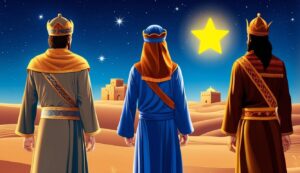Is God and Jesus Christ the Same Person: Understanding Their Differences and Connection

God and Jesus Christ are central figures in Christianity, representing distinct roles: God as the Creator and Jesus as the Son and Savior of humanity.

God and Jesus Christ are central figures in Christianity, representing distinct roles: God as the Creator and Jesus as the Son and Savior of humanity.

The Bible comprises 66 books, divided into the Old and New Testaments, encompassing various literary genres, historical accounts, poetry, and theological teachings.

Faith emphasizes reliance on spiritual truth over physical evidence, encouraging believers to trust in unseen realities and divine guidance throughout their lives.

Friendship strengthens bonds through mutual support, trust, and shared experiences, fostering emotional connections that enhance well-being and resilience in personal relationships.

Deuteronomy 28:43 highlights the consequences of disobedience, emphasizing the rise of foreign oppressors and economic struggles within communities, impacting social hierarchies and livelihoods.

The narrative presents the early life and mission of a significant figure, highlighting key events, themes of faith, and foundational teachings that shaped future beliefs.

The Magi, guided by a star, traveled to visit Jesus after his birth, bringing gifts of gold, frankincense, and myrrh, symbolizing their reverence.

The Prodigal Son is a biblical parable illustrating themes of forgiveness, redemption, and familial relationships, emphasizing the joy of reconciliation and the nature of divine grace.

Key lessons from Luke 9 include the significance of faith, the importance of self-denial, and the call to discipleship, emphasizing service and compassion in leadership.

Hagar, an Egyptian servant, faced challenges of motherhood and faith, ultimately becoming a key figure in the narrative of Abraham's family dynamics and divine promises.